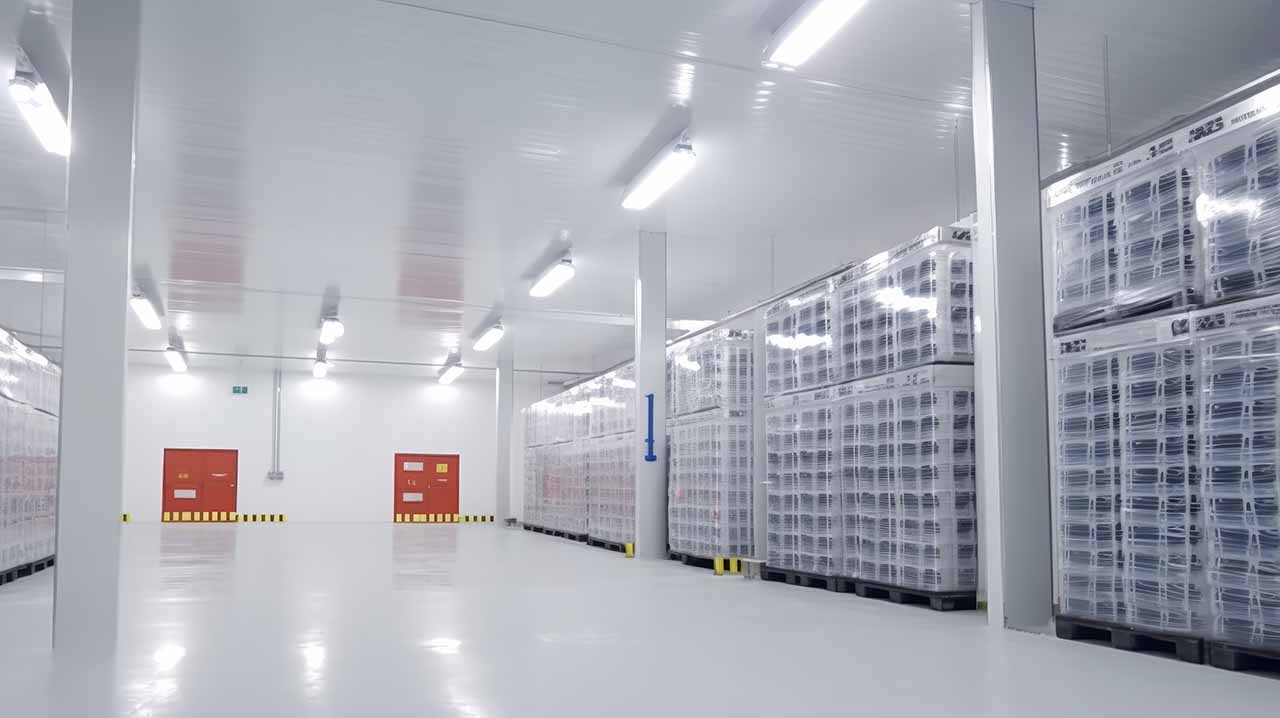Temperature-controlled warehousing is experiencing rapid evolution driven by technological advancements, changing consumer preferences, and industry regulations. As we look ahead to 2024, several trends are shaping the landscape of temperature-controlled storage facilities. This article explores the key trends that are expected to influence temperature-controlled warehousing in the coming year.
- Adoption of Advanced IoT Solutions
1.1 Real-Time Monitoring
- IoT Sensors: The adoption of Internet of Things (IoT) sensors continues to rise, enabling real-time monitoring of temperature, humidity, and other environmental conditions within storage facilities.
- Data Analytics: Advanced analytics platforms analyze IoT data to provide actionable insights, improving temperature management, inventory control, and operational efficiency.
1.2 Predictive Maintenance
- Condition Monitoring: IoT sensors facilitate predictive maintenance by monitoring equipment health in real-time, detecting potential issues before they lead to downtime or equipment failure.
- Optimized Performance: Predictive maintenance strategies optimize equipment performance, minimize maintenance costs, and prolong asset lifespan in temperature-controlled warehouses.
- Focus on Sustainability and Energy Efficiency
2.1 Green Initiatives
- Renewable Energy: Temperature-controlled warehouses are increasingly adopting renewable energy sources such as solar and wind power to reduce carbon emissions and lower energy costs.
- Energy-Efficient Technologies: Investment in energy-efficient refrigeration systems, LED lighting, and insulation materials helps minimize environmental impact and operating expenses.
2.2 Waste Reduction
- Optimized Inventory Management: Advanced inventory management systems and demand forecasting tools reduce overstocking and minimize food waste in temperature-controlled warehouses.
- Circular Economy Practices: Collaboration with suppliers and partners to implement circular economy practices, such as recycling and waste recovery, further reduces environmental footprint and promotes sustainability.
- Automation and Robotics Integration
3.1 Automated Storage Systems
- AS/RS Technology: Automated storage and retrieval systems (AS/RS) optimize space utilization and enhance inventory management efficiency in temperature-controlled warehouses.
- Robotics Integration: Robotics technology streamlines picking, packing, and palletizing processes, increasing throughput and reducing labor costs in cold storage facilities.
3.2 Autonomous Vehicles
- AGVs and AMRs: Automated guided vehicles (AGVs) and autonomous mobile robots (AMRs) automate material handling tasks, such as pallet transport and order picking, improving warehouse productivity and safety.
- Integration with WMS: Integration of autonomous vehicles with warehouse management systems (WMS) enables seamless coordination and optimization of warehouse operations.
- Expansion of Multi-Temperature Zones
4.1 Flexibility and Versatility
- Multi-Temperature Storage: Temperature-controlled warehouses are diversifying their storage capabilities to accommodate multiple temperature zones, catering to the varying requirements of different product categories.
- Dynamic Configuration: Flexible warehouse layouts and adjustable partitioning systems allow for dynamic configuration of temperature zones based on changing inventory needs and seasonal demand patterns.
- Emphasis on Food Safety and Traceability
5.1 Blockchain Technology
- Enhanced Traceability: Blockchain technology enhances food traceability by providing immutable records of product origin, handling, and temperature history throughout the supply chain.
- Compliance Management: Adoption of blockchain-based traceability solutions helps temperature-controlled warehouses comply with food safety regulations and certification standards.
5.2 Quality Assurance
- Temperature Mapping: Comprehensive temperature mapping studies assess temperature uniformity and identify potential hot spots within storage facilities, ensuring consistent product quality and compliance with regulatory requirements.
- Remote Monitoring: Remote temperature monitoring systems enable continuous surveillance of storage conditions, allowing for proactive intervention to prevent quality deviations and product spoilage.
- Shift Towards On-Demand and Last-Mile Delivery
6.1 Urban Logistics
- Micro-Fulfillment Centers: Temperature-controlled micro-fulfillment centers located in urban areas facilitate on-demand and last-mile delivery of perishable goods to meet the growing demand for convenience and immediacy.
- Efficient Delivery Networks: Integration of temperature-controlled warehouses with efficient delivery networks and route optimization technologies ensures timely and reliable delivery of temperature-sensitive products to consumers.
As we move into 2024, temperature-controlled warehousing continues to evolve in response to changing market dynamics and technological advancements. The adoption of advanced IoT solutions, focus on sustainability and energy efficiency, integration of automation and robotics, expansion of multi-temperature zones, emphasis on food safety and traceability, and shift towards on-demand and last-mile delivery are key trends shaping the future of temperature-controlled storage facilities. By embracing these trends, temperature-controlled warehouses can enhance operational efficiency, improve product quality, and meet the evolving needs of the global supply chain.


 Dave McGowan has been a member of the WEL Family since May 1989. He is a husband and father of two children. Dave is also a U.S. Army veteran and served in Vietnam in 1971-1972, and he attended driving school soon after he was released from the military in 1974.
Dave McGowan has been a member of the WEL Family since May 1989. He is a husband and father of two children. Dave is also a U.S. Army veteran and served in Vietnam in 1971-1972, and he attended driving school soon after he was released from the military in 1974. During his career with WEL, Phil has worked as a driver, dispatcher, terminal manager and customer service manager. He says he always was a driver first, though non-driving jobs taught him financial management that helps him as an owner-operator.
During his career with WEL, Phil has worked as a driver, dispatcher, terminal manager and customer service manager. He says he always was a driver first, though non-driving jobs taught him financial management that helps him as an owner-operator.